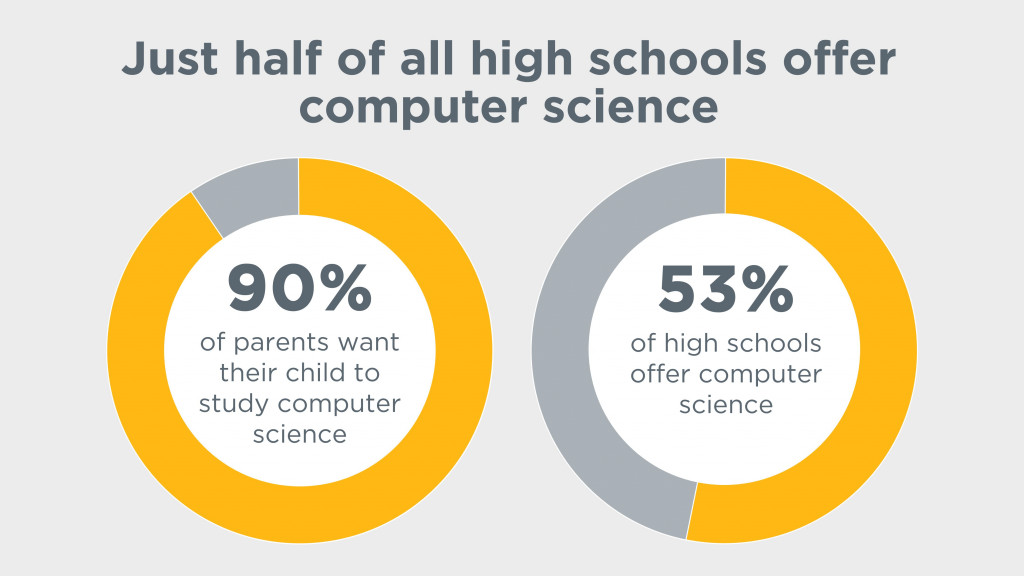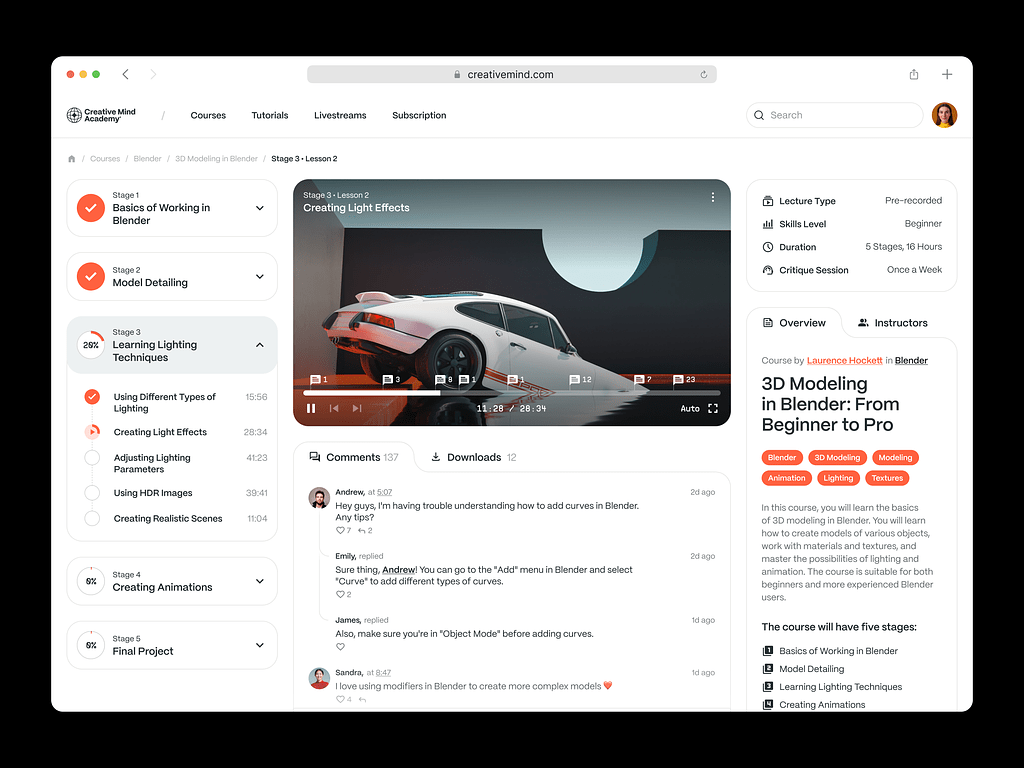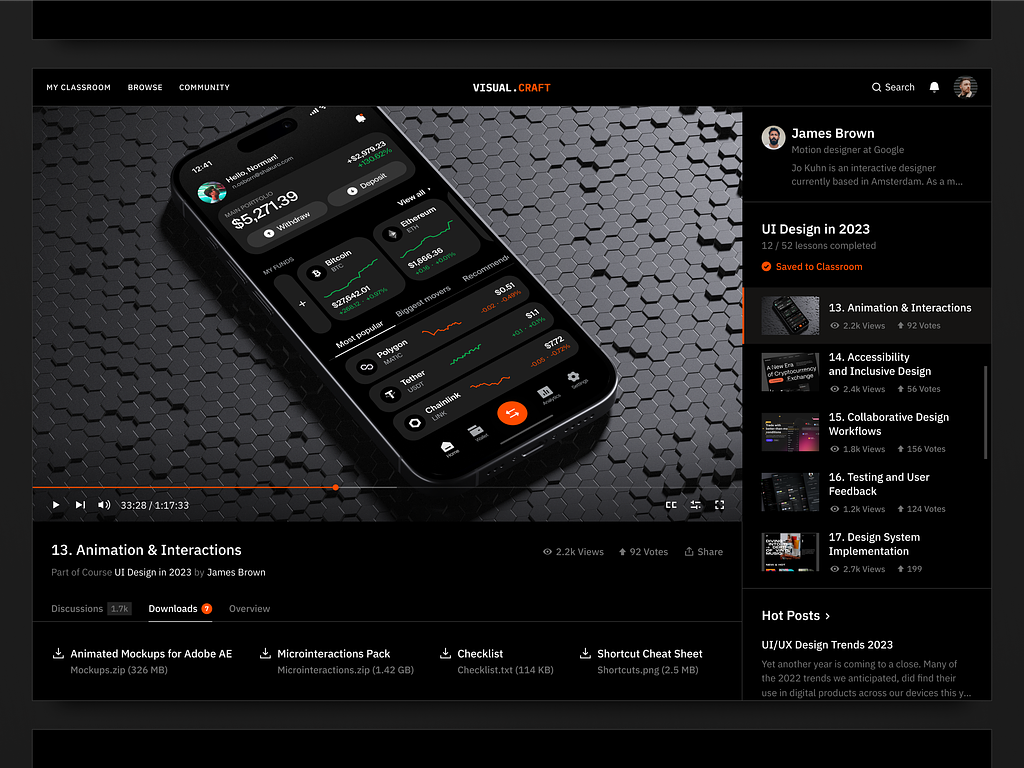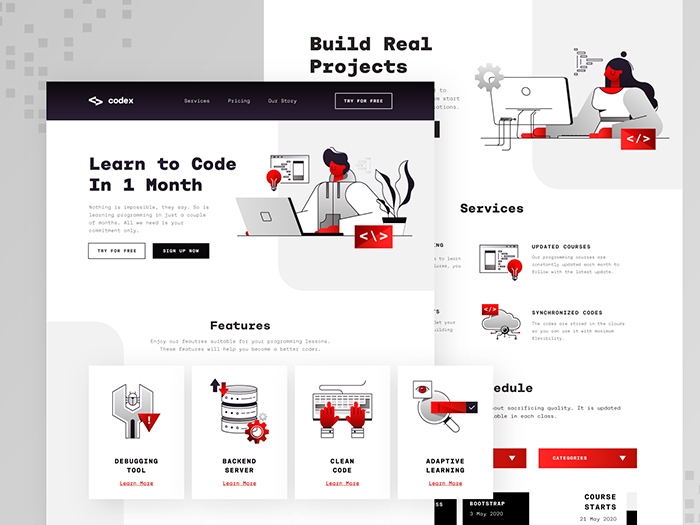As a developer, you understand the transformative power of programming—not just as a career, but as a mindset that encourages problem-solving, creativity, and critical thinking. But when it comes to sharing this knowledge with our kids, the challenge can feel daunting. You might grapple with the frustration of finding resources that are both age-appropriate and engaging, while also contending with the reality that traditional coding languages may be too complex or tedious for young minds.
Contents:
That’s why we’ve put together this article to guide you through the best programming languages to learn for kids. From languages designed for playful interaction to those that foster creativity, we’ll dissect the options available and provide you with actionable insights. By the end, you’ll have a clear path to introduce your children to the world of coding and to do so in a way that sparks their imagination and fosters a genuine interest in technology.
Why is it important to teach kids programming?
Programming for children involves teaching them the basic concepts of coding, including problem-solving, algorithm design, and programming logic.
Teaching kids how to code provides them with a foundation in computational thinking, problem-solving, and critical thinking skills. According to a team of UC Berkeley psychologists, creativity declines as we age, therefore, teaching this skill to kids also helps them develop creativity, logical reasoning, and communication. These skills are valuable in many areas of life, including academics, careers, and personal growth.
Code.org reports that computing accounts for 71% of new STEM jobs, yet only 8% of STEM graduates specialize in Computer Science. In a world where technology is omnipresent, understanding how it works is essential. By teaching your child how to code, you can give them a valuable advantage in the modern workforce. It’s worth noting that an overwhelming 90% of parents express an interest in a coding language to learn for their kids.

Programming for kids based on their age
The approach depends on the kid’s age. If you take a road too hard for a young mind, your child won’t get much and might start disliking the subject. So here are a few approaches you can take depending on the age of your child:
Ages 5-7: Introduction to basic concepts
While teaching programming for preschool, introduce fundamental concepts like sequencing (the order in which commands are executed), loops (repeating actions), and conditionals (if-then statements) through engaging stories or games.
At this age, children can start with visual programming languages that use blocks to represent code, where they can drag and drop the blocks to create animations or stories. Additionally, you can use toys like LEGO Robotics or simple unplugged activities (like coding with physical objects) to teach logic and sequencing.
Ages 8-10: Building foundations
Start the slow transition to simple programming languages like Python to solidify foundational skills. Engage kids in creating simple games, which help them understand logic, structure, and creative problem-solving.
At this stage, you can start enrolling them in coding clubs or workshops to learn collaboratively with peers, fostering teamwork and motivation.
Ages 11-13: Intermediate skills and text-based programming
Begin learning more advanced languages like JavaScript or HTML/CSS. This age group is ready for the transition from block-based to text-based programming. Introduce concepts such as algorithms, data structures, and basic problem-solving skills that can be applied to coding challenges.
Encourage participation in coding contests or online platforms like Code.org, Khan Academy, or Codecademy that provide guided learning and real-world applications.
Ages 14 and up: Advanced programming skills
At this stage, offer more complex coding languages to learn such as Java, C++, or Swift, depending on their interests (e.g., mobile app development, game development). Teach them about the software development cycle: project planning, testing, debugging, and deployment processes.
Support projects that solve real problems or contribute to open-source projects, fostering a sense of purpose. Help them seek internships or mentorship opportunities in tech, giving them insights into professional development and networking.
No matter the age, remember, that every child’s learning journey will be different. You have to adapt the curriculum and learning pace based on individual interests and abilities. Moreover, your support as a parent plays a crucial role in the kids’ education and helps their talents bloom.

Online Courses Platform Website by Shakuro
Best programming languages to learn for kids
When choosing a programming language for kids, it’s important to consider the child’s age, experience, and interests. Some languages are designed specifically for children, while others are more suitable for older or more experienced programmers.
For example, there are visual and text-based programming languages.
Kid-friendly programming languages
They are designed specifically for children who want to learn to program. These languages use a simplified syntax that is easy to understand and learn, making them perfect for beginners. They often incorporate fun graphics and interactive features, making the learning process enjoyable and engaging for kids.
Using visual blocks, they allow children to drag and drop commands to create programs. This makes it easier for them to learn the basics of programming and build their confidence before moving on to more complex projects. Additionally, many kid-friendly languages offer tutorials and games that teach children programming concepts in a fun and interactive way, encouraging them to explore and experiment with code.
Visual programming languages
As we said before, these kid-friendly programming languages are designed for young children who want to learn coding. These languages have a simplified syntax that is easy to understand, making them perfect for beginners. They often incorporate fun graphics and interactive features, making the learning process enjoyable and engaging for kids.
Using visual blocks, they allow children to drag and drop commands to create programs. This makes it easier for them to learn the basics of programming and build their confidence before moving on to more complex projects. Additionally, many kid-friendly languages offer tutorials and games that teach children programming concepts in a fun and interactive way, encouraging them to explore and experiment with code.
Here are easy-to-learn computer languages for kids:
Scratch: a visual programming language
Scratch is a visual programming language designed for ages 8-16. Scratch allows kids to create interactive stories, games, and animations by dragging and dropping code blocks. Scratch is a great tool to get started with programming concepts and developing their creativity and problem-solving skills.
There is also a simplified version, ScratchJr, aimed at younger children, typically ages 5 to 7. It has fewer programming blocks focusing on basic sequencing and events concepts. What’s more, it’s optimized as a mobile app for tablets, providing a more tactile experience for younger users.
Why you should choose Scratch:
- Intuitive and easy to use
- Drag and drop code blocks
- Allows them to create interactive stories, games, and animations
- Encourages creativity and problem-solving skills
Examples of Scratch projects:
- Storytelling: Creating interactive stories with characters, dialogue, and actions.
- Game creation: Designing and coding simple games such as maze games and platformers.
- Animation: Creating animations and interactive graphics using code blocks
Blockly: an intuitive block-based programming language
Blockly is a block-based, easy-to-learn computer language that simplifies coding concepts for kids. Blockly is designed for ages 8-16 and can be used to create games, animations, and interactive stories.
Why you should choose Blockly:
- Easy to use drag and drop interface
- Suitable for kids aged 8-16
- Allows them to create games, animations, and interactive stories
- Encourages creativity and problem-solving skills
Examples of Blockly projects:
- Game creation: Designing and coding simple games such as maze games and platformers.
- Animation: Creating animations and interactive graphics using code blocks.
- Interactive story creation: Creating interactive stories with characters, dialogue, and actions.
Tynker: an online platform
Although it’s not a language, this platform can help you teach programming for preschool. Many of Tynker’s courses use a block-based coding interface that allows kids to learn concepts without complex code. This visual approach helps them understand logic and sequencing.
Kids can create their games using Tynker’s platform, which fosters creativity and provides a hands-on way to apply coding skills. They can design characters, write game rules, and publish their creations. With the help of tools and resources for parents, including lesson plans, tracking progress, and classroom management features, you can support your child during the programming journey,
Why you should choose Tynker:
- Promotes critical thinking, problem-solving, and creativity—skills that are increasingly important in the digital age.
- Allows kids to learn at their own pace, making it accessible for learners with different backgrounds and abilities.
- Keeps children motivated and encourages a positive attitude towards learning programming.
Examples of Tynker projects:
- Interactive games:Kids can design their games, complete with character movement, obstacles, power-ups, and enemies.
- Animations: Together with kids, you can create animated stories featuring their characters, complete with dialogue, visual effects, and sound.
- Science simulations: You can create projects that simulate physics concepts, such as gravity, motion, and energy, allowing kids to learn about scientific principles interactively. Alternatively, your children can build ecosystem simulations.

Online Education Website Design by Shakuro
Kodu: a visual programming language for creating games
Kodu is a visual programming language designed to create games. Kodu is a 3D game development environment that is suitable for kids aged 8-16. It allows children to design and program their video games using a visual interface. Kodu is a great coding language to learn while encouraging creativity and problem-solving skills.
Why you should choose Kodu:
- Easy to use drag and drop interface
- Suitable for kids aged 8-16
- Allows them to create 3D games and virtual environments
- Encourages creativity and problem-solving skills
Examples of Kodu projects:
- Game creation: Designing and coding simple games such as racing games, puzzle games, and platformers.
- Virtual world creation: Creating 3D virtual worlds with interactive objects, characters, and landscapes.
- Game modification: Modifying existing games to add new features or change the gameplay.
Roblox Studio: a game development platform
You’ve probably heard of this one as a popular video game, however, this platform offers a very intuitive interface for young kids to create their games. They can use drag-and-drop features to build games and learn some basic scripting using Lua as they progress. This can be more suitable for slightly older kids (closer to 8), but younger children can still explore creation tools.
The platform has approximately 207.14 million active users per month. Around 79.5 million people visit Roblox every day. It also supports more than 2.5 million developers who create content for the platform.
Why you should choose Roblox:
- Many children are already familiar with Roblox as a gaming platform. This familiarity makes it more approachable and engaging compared to traditional coding environments
- Allows kids to develop their own games and experiences, providing a hands-on learning approach.
- Roblox has a large, active community where kids can share their creations, collaborate on projects, and participate in game development challenges.
- By creating games on Roblox, children naturally learn important game design principles, including game mechanics, user experience design, storytelling, and balancing
Examples of Roblox projects:
- Obstacle course: A challenging obstacle course with various jumps, traps, and puzzles.
- Adventure game: An adventure game with a compelling narrative, quests, and challenges.
- Virtual museum: A gallery showcasing art or historical artifacts.
Alice: a 3D programming environment for storytelling and game creation
Alice is one of the easy-to-learn computer languages and allows kids to create interactive stories, animations, and games. The language uses a drag-and-drop interface, making it easy for kids to create 3D objects, characters, and backgrounds. With Alice, kids can also learn fundamental concepts such as loops, conditions, and variables.
Why you should choose Alice:
- Alice is free and easy to use, making it ideal for beginners.
- Alice uses a drag-and-drop interface to create 3D objects and environments, making it more engaging.
- Alice includes interactive tutorials and sample projects to help children get started.
- Alice teaches fundamental programming concepts that can be applied to other programming languages.
Examples of Alice projects:
- Create an interactive story with characters and dialogue.
- Design a game with a unique 3D environment and objectives.
- Animate characters and objects in a 3D environment.
Text-based programming languages
These are designed for kids aged 10 and up. They offer more advanced projects and offer more flexibility than visual languages. The tools use written code rather than visual blocks, making programming more challenging and powerful.
Here are the best programming languages to learn for kids:
Python: a versatile and widely used programming language
Python is used in various fields, including artificial intelligence, web development, and data science. Despite its advanced capabilities, the language is an excellent choice for beginners, as it is easy to read and learn. Python’s simplicity and versatility make it an excellent choice for children who want to master a text-based programming language.
Why is Python great:
- Easy to read and learn syntax
- A large community of developers and resources for learning
- Versatile and widely used in various fields
Examples of Python projects:
- Creating a calculator program
- Building a text-based adventure game
- Designing a simple website using Flask

Online Educational Mobile App Featuring AI by Shakuro
JavaScript: a popular web programming language for kids
JavaScript is a text-based programming language used primarily for web development. It is one of the most popular coding languages to learn and is an excellent choice for kids interested in building websites and web applications. JavaScript is easy to learn and offers immediate visual feedback, making it a great language for beginners.
Why is JavaScript great:
- Immediate visual feedback
- A large community of developers and resources for learning
- Widely used in web development
Examples of JavaScript projects:
- Creating an interactive quiz game
- Designing a responsive website
- Building a simple animation
Ruby: a user-friendly language for creating web applications
Ruby is a text-based programming language that emphasizes simplicity and ease of use. It is a popular web development language known for its clear and concise syntax. Ruby is an excellent choice for kids who want to learn a text-based language that is easy to read and write.
Why is Ruby great:
- Easy to read and write syntax
- A large community of developers and resources for learning
- Emphasis on simplicity and ease of use
Examples of Ruby projects:
- Building a simple web application
- Creating a chatbot using the Ruby on Rails framework
- Designing a game using the Gosu game development library
C++: a powerful programming language for game development and more
C++ is a powerful text-based language used primarily for developing operating systems, game engines, and other high-performance applications. That’s why it is one of the best programming languages to learn which requires a solid understanding of programming concepts. This fact makes it more suitable for older kids or those with more advanced coding experience.
Why is C++ great:
- High performance and speed
- Low-level control over computer resources
- Widely used in game development and operating systems
Examples of C++ projects:
- Building a simple game using the SFML library
- Creating a program to calculate prime numbers
- Developing a text-based adventure game
Java: a widely used language for developing mobile apps and websites
Java is a text-based programming language that is widely used in developing Android mobile applications, websites, and enterprise applications. It emphasizes portability and compatibility, making it an excellent choice for kids interested in mobile app development or enterprise software development.
Why is Java great:
- High portability and compatibility across platforms
- A large community of developers and resources for learning
- Widely used in mobile app development and enterprise software
Examples of Java projects:
- Building a simple Android app
- Creating a chatbot using the Spring framework
- Designing a basic e-commerce

Programming courses concept by Samuel Oktavianus
Swift: a robust and intuitive programming language created by Apple
Swift is a programming language developed by Apple used to create iOS and macOS apps. It is easy to learn, making it an ideal language for beginners, including kids. The syntax is designed to be readable and easy to understand, so children can quickly grasp fundamental concepts.
Why is Swift great:
- It emphasizes simplicity, making Swift a great language for children.
- The syntax is designed to be readable and easy to understand, so kids can grasp fundamental programming concepts quickly.
- The language includes interactive tutorials and sample projects to help kids get started.
- It is widely used in the industry and can provide a foundation for a career in app development.
Examples of Swift projects:
- Create a simple calculator app.
- Design a game with unique features and objectives.
- Develop a mobile app that solves a real-world problem.
HTML/CSS: a markup language used to structure and design the content of web pages
HTML (Hypertext Markup Language) and CSS (Cascading Style Sheets) are not traditional programming languages, but are essential for web development and can be an excellent starting point for kids interested in this subject.
Why is HTML/CSS great:
- They are essential for web development, making them useful skills for children who want to design web pages.
- They are easy to learn computer languages and can provide a foundation for getting into more complex languages.
- The languages are widely used in the industry, so they are essential skills for future careers.
Examples of HTML/CSS projects:
- Create a simple webpage with text, images, and links.
- Design a personal website with a unique layout and style.
- Develop a website for a local business or organization.
Teaching kids how to code is becoming increasingly important in today’s world, and choosing the right programming language is crucial to making it a fun and engaging experience. The languages discussed in this article are just a few examples of the many options available to children. By considering factors such as ease of use, features, and benefits, you can help your kids choose the best programming languages to learn.
Coding toys for kids: a fun and engaging way to introduce coding
Coding toys are designed to help children learn programming concepts through play. These toys often incorporate robotics and interactive elements, allowing kids to experiment in a fun and engaging way. They are a great way to teach programming for preschool.
LEGO Boost
LEGO Boost is an educational robot that introduces kids to programming concepts using a mobile app. Equipped with colorful sensors and a programmable interface, children can control the robot’s movements and actions by writing simple code, enhancing their logical thinking and problem-solving skills.
Ozobot
This is a small robot that can follow lines and respond to color codes drawn on paper. Kids can program Ozobot using color patterns or with the Ozoblockly app, which features a block-based coding interface. This engages kids in both creative drawing and coding.
Sphero
Sphero is a spherical robot that can be programmed through various apps using block-based or text-based coding. Kids can control its movements, make it draw, navigate mazes, or even play games. It encourages STEM learning by integrating coding with robotics and physical movement.
Cubetto
It is a wooden robot designed for younger children. It uses a simple programming interface featuring colorful tiles that represent different commands. Kids can program the robot to navigate a map, fostering spatial awareness and basic coding logic through hands-on play.
Cozmo
Cozmo is a playful robot that uses AI to interact with children. It can be programmed using the Cozmo SDK or a visual programming interface. Through games and challenges, kids can learn coding concepts and engagingly explore robotics.

Online Courses Platform Website Dashboard by Shakuro
Online coding classes for kids
Online coding classes are a great way for kids to learn to code from the comfort of their homes. These classes are designed to be interactive and engaging, making it easy for them to learn coding concepts. They are usually led by experienced instructors who guide students through the process of learning to code.
Features of online coding classes for kids
Online coding classes for kids offer several features that make them effective in teaching programming to young learners. Here are some of the features you can expect from most online coding classes:
- Structured curriculum – They have a structured curriculum designed to teach coding concepts step by step. Children get used to a balanced approach with fixed time devoted to learning and resting.
- Interactive exercises – Interactivity helps students grasp information and then put the knowledge into use.
- Live instructors – Live instructors guide and support students through the code learning process.
Examples of online coding classes for kids
-
- Codeacademy – it offers a variety of online coding classes suitable for children. These courses cover the best programming languages to learn, including Python, JavaScript, and Ruby.
- Khan Academy – there are free online coding classes for kids. They include a range of topics, including computer programming and animation.
- Udemy – it offers online coding classes for kids led by experienced instructors. There are courses on app development and web design.
- CodeMonkey – this is a user-friendly web-based platform that teaches text-based programming in a game-like manner.
Online coding classes for kids teach coding effectively, with features such as structured curriculums, interactive exercises, live instructors, and collaborative projects. By using these tools, you can help your children learn to code and develop skills that will be valuable in their future careers.
Factors to consider when choosing easy-to-learn computer languages for your child
When picking a language for your child, it’s important to consider the following factors:
- Age and experience level: Younger children benefit from visual languages like Scratch, Blockly, and Kodu, while older kids can learn a text-based language like Python.
- Interest: Consider your child’s interests when choosing a programming language. For example, if your child is interested in game development, Python or Scratch are a good choice, depending on the age.
- Real-world applications: Pick a coding language to learn with real-world applications to keep your child motivated and engaged.
- Ease of use: It should be easy to learn and use. Visual languages like Scratch and Blockly are generally easier for younger kids to learn.
- Community support: Choose a language with a strong community of users who can provide support and resources.
Conclusion
Programming for kids is an excellent way to teach them valuable skills in problem-solving, computational thinking, and critical thinking. With the increasing demand for coding expertise and data analytics knowledge, introducing your child to programming at a young age is a wise investment in their future. However, it’s essential to consider their age, experience, and interests.
What is the easiest programming language to learn? It depends. Kid-friendly languages like Scratch, Blockly, and Kodu offer an intuitive and easy-to-use interface, encouraging creativity and problem-solving skills. Text-based programming languages are suitable for older kids with advanced projects, and it’s crucial to introduce them gradually.
Do you have an idea for an e-learning platform where kids and grown-ups could polish their skills? Contact us, and our team will create a versatile app to capture the attention of future students.
* * *
This article was originally published in June 2023 and was updated in October 2024 to make it more relevant and comprehensive.
